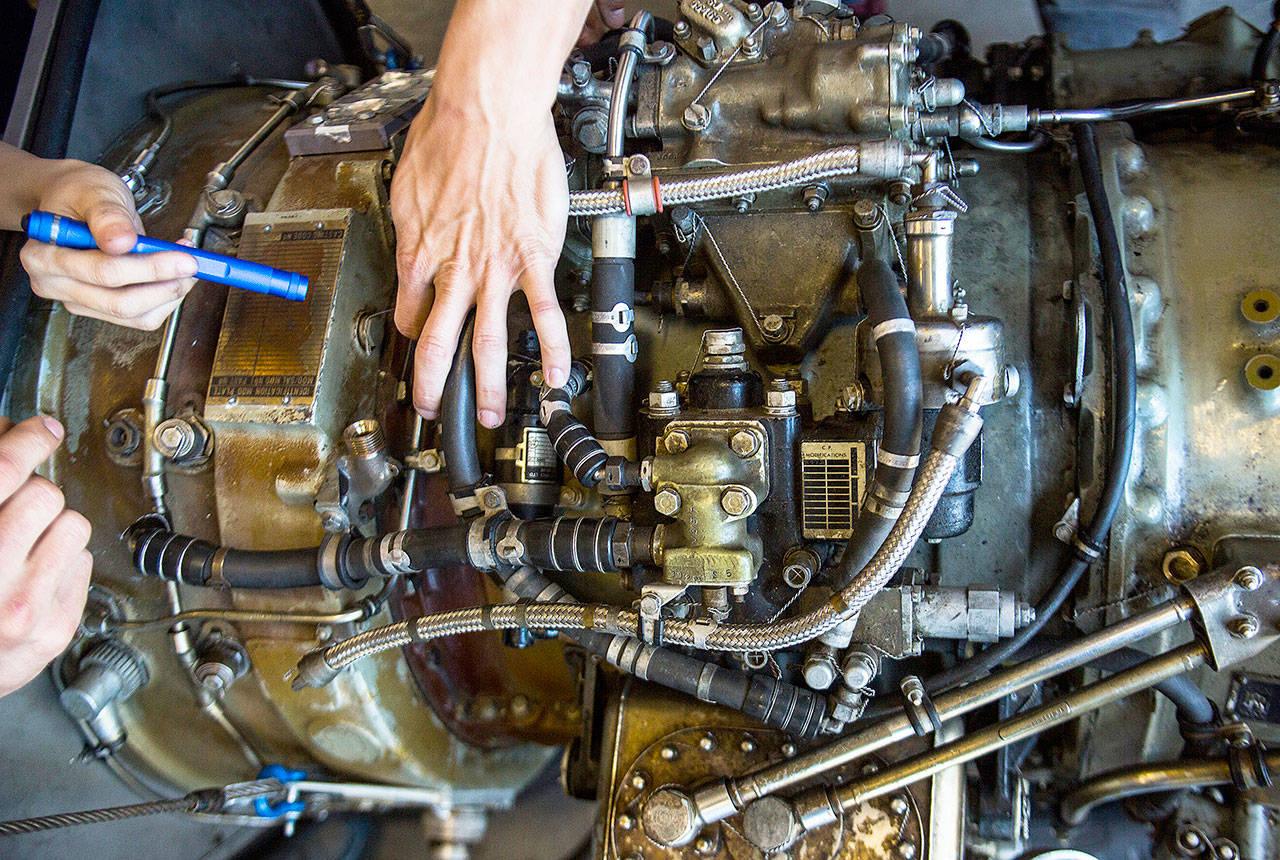By The Herald Editorial Board
Dwarfed by bigger-ticket items in Gov. Jay Inslee’s proposed $54.4 billion budget for the 2019-21 biennium released last week — including K-12 education, mental health services and environmental work — it would be easy to overlook some $110 million in spending.
But that $110 million represents an investment that is key to the state’s continued strong economy, an investment that can help connect the state’s young adults in high school and after with the education, training and experience needed for fulfilling and well-paid careers.
Many should now be familiar with this number: 740,000. That’s the estimated number of job openings expected in Washington state over the next five years. But of that nearly three-quarters of a million jobs, about 70 percent will require some level of post-high school education or training, such as technical skills certification, accreditation, apprenticeship or college degree. Currently only 40 percent get that education or training after high school; 20 percent don’t earn a high school diploma.
That leaves a significant number of young adults with an incomplete resume for a desired job and an equally significant number of employers throughout the state who either have to hire from outside the state or spend money and time to train new employees.
Launched in 2017, Career Connected Washington has set the goal of securing a path for 100,000 young adults in the state in the next five years with learning that connects and prepares them for high-demand, high-wage jobs. The $110 million in the governor’s budget provides funding for related programs to begin that work. Included is:
$26 million in grant funding for work with industries and educators to develop curriculum and career-connected learning and youth and adult apprenticeship programs;
$22 million for increased enrollment in K-12 and Community and Technical College programs;
$18 million for capital funding grants for equipment in K-12 schools and community and technical colleges; and
$16 million in training for existing workers, including in the fields of health care, information technology, aerospace and construction trades.
In addition, Inslee’s budget also allocates $103 million for the Washington State Promise program that provides need-based grants for students’ college and other post-high school education.
Also included in the governor’s budget is $750,000 for operation of a Regional Apprenticeship Pathways program now being developed in north Snohomish County that is working with school districts, labor unions and others to establish a construction trades pre-apprenticeship program for high school students and young adults.
It isn’t that this career and technical training hasn’t been available all along, but typically it’s been viewed as an alternative for struggling students or those who aren’t considering a college degree, rather than as a viable path in itself to good careers.
Along with securing funding, the Career Connected effort also is working to raise its profile among industry leaders and employers, educators, and students and parents, said Maud Daudon, its executive leader, in a recent meeting with The Herald Editorial Board.
With students and parents, it’s a matter of introducing both to the possibilities of various careers, Daudon said, work that includes job fairs, job-shadowing and job-site tours. That continues with career preparation through development of hands-on skills and career and technical education programs, such as those offered by the Sno-Isle Tech Skills Center near Paine Field, and on to post-secondary credential and apprenticeship programs.
One of the hurdles to student participation, said Wes Allen, assistant director at Sno-Isle, has been the mindset that students should move from high school to college, then career, when some opportunities are present for students — with training during and after high school — to begin real and paid work experience as they complete their training, before moving on to college degree programs in later years to further their education in particular fields.
School districts are working with the state effort as they develop their own programs and curriculum, such as that at Everett School District, said Dana Riley Black, director of the district’s STEM and partnership programs. The district is moving ahead with its plan for specific career pathway programs at each of its existing three high schools and a fourth high school when it is built.
For example, Riley Black said, work should begin soon on Everett High School’s Commercial Building, which is planned to host programs centered on nursing and medical careers.
The Career Connected effort also is seen as a necessary step in promoting and retaining the aerospace industry that has made its home in Washington state and Snohomish County.
Kelly Maloney, president and CEO of the Aerospace Futures Alliance, said its work to develop educated and trained aerospace and advanced manufacturing workers will help the state make the case to The Boeing Co. that its New Market Airplane — informally dubbed the 797 — should be built in this state.
A recent report from an alliance of state elected officials, business and union leaders, recommended work to boost investment in K-12 education, technical programs and higher education that provides skills training and development needed by Boeing and its suppliers.
It took about 10 years for the state to increase the percentage of students with post-secondary education and training to 40 percent from 30 percent. With continued effort — and $110 million in seed money — the state can continue to close the gap to the 70 percent ready for those 740,000 jobs. It will mean more young adults can find rewarding careers, and industries can hire the employees they need to succeed and grow the state’s economy.
Talk to us
> Give us your news tips.
> Send us a letter to the editor.
> More Herald contact information.

























